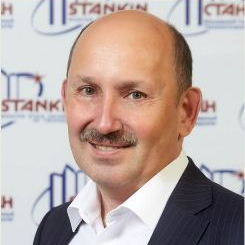Machining of Advanced Cutting Materials: Fundamentals, Modeling and Applications
A special issue of Metals (ISSN 2075-4701).
Deadline for manuscript submissions: closed (30 December 2022) | Viewed by 27621
Special Issue Editor
Interests: processing by concentrated energy flows; laser processing; electrophysical machining; heat and hardening treatment; surface finishing and coating; powder metallurgy; nanomaterials; nanocoatings and thin films; thermal spray technologies; process diagnostics and monitoring
Special Issues, Collections and Topics in MDPI journals
Special Issue Information
Dear Colleagues,
Although advanced tool materials possess unique physical and mechanical properties such as high hardness, wear resistance, and heat resistance, their machinability is so low that it complicates manufacturing cutting tools and cutting inserts. At the same time, the development of new efficient technologies for machining cutting tools made of advanced materials is critically important due to the requirements around the accuracy and roughness of the tool surface being machined.
Today, multifactor mathematical modeling is the key theoretical instrument that facilitates, alongside laboratory experiments, resolving the aforementioned fundamental problems. Rational shaping of a tool of a given shape based on its geometry and tool material properties is a fast and cost-efficient way of increasing the tool operational properties and extending the tool life that in addition allows reducing the time needed to develop a prototype due to the reduction in the number and the complexity of laboratory experiments. One of the most important issues in manufacturing cutting tools from advanced tool materials is an analytical description of surfaces being machined needed for the assignment of rational tool trajectories. The most complex objects to be simulated and machined are double curvature surfaces such as helical surfaces and cutting edges designed based on them on shaped production cutting surfaces. Machining products with a curved directrix and generatrix is a complex dynamic process, which depends on the tool geometry and technological parameters of the machine, which in turn strongly depend on the properties of the tool material. Advancing the tool design by accounting for physical and mechanical properties of the tool material requires the application of contemporary mathematical methods, including the widely used finite element method (FEM).
The most common tools are cutters and drills with the cutting edge of a complex shape. Typically, such tools are endowed with a helical groove, whose shape and machining technology are largely controlled by the hardness and strength of the tool material, which in turn strongly depends on its chemical composition, structure and grain size, with the latter being a critically important parameter controlling the tool curvature radius. Another important class of tools are assembly tools equipped with replaceable cutting inserts on which wear-resistant coating is applied.
We invite contributions from experimentalists, theorists, and modelers performing research on the machining of complex surfaces, including visualization of the contact between the workpiece and the cutting edges, grinding, electroerosion, milling, and other processes involved in shaping and application of advanced cutting materials.
Prof. Dr. Sergey N. Grigoriev
Guest Editor
Manuscript Submission Information
Manuscripts should be submitted online at www.mdpi.com by registering and logging in to this website. Once you are registered, click here to go to the submission form. Manuscripts can be submitted until the deadline. All submissions that pass pre-check are peer-reviewed. Accepted papers will be published continuously in the journal (as soon as accepted) and will be listed together on the special issue website. Research articles, review articles as well as short communications are invited. For planned papers, a title and short abstract (about 100 words) can be sent to the Editorial Office for announcement on this website.
Submitted manuscripts should not have been published previously, nor be under consideration for publication elsewhere (except conference proceedings papers). All manuscripts are thoroughly refereed through a single-blind peer-review process. A guide for authors and other relevant information for submission of manuscripts is available on the Instructions for Authors page. Metals is an international peer-reviewed open access monthly journal published by MDPI.
Please visit the Instructions for Authors page before submitting a manuscript. The Article Processing Charge (APC) for publication in this open access journal is 2600 CHF (Swiss Francs). Submitted papers should be well formatted and use good English. Authors may use MDPI's English editing service prior to publication or during author revisions.
Keywords
- cutting tools
- shaping of advanced cutting materials
- grinding
- electroerosion
- milling
- mathematical modeling
- FEM in tool design and machining





